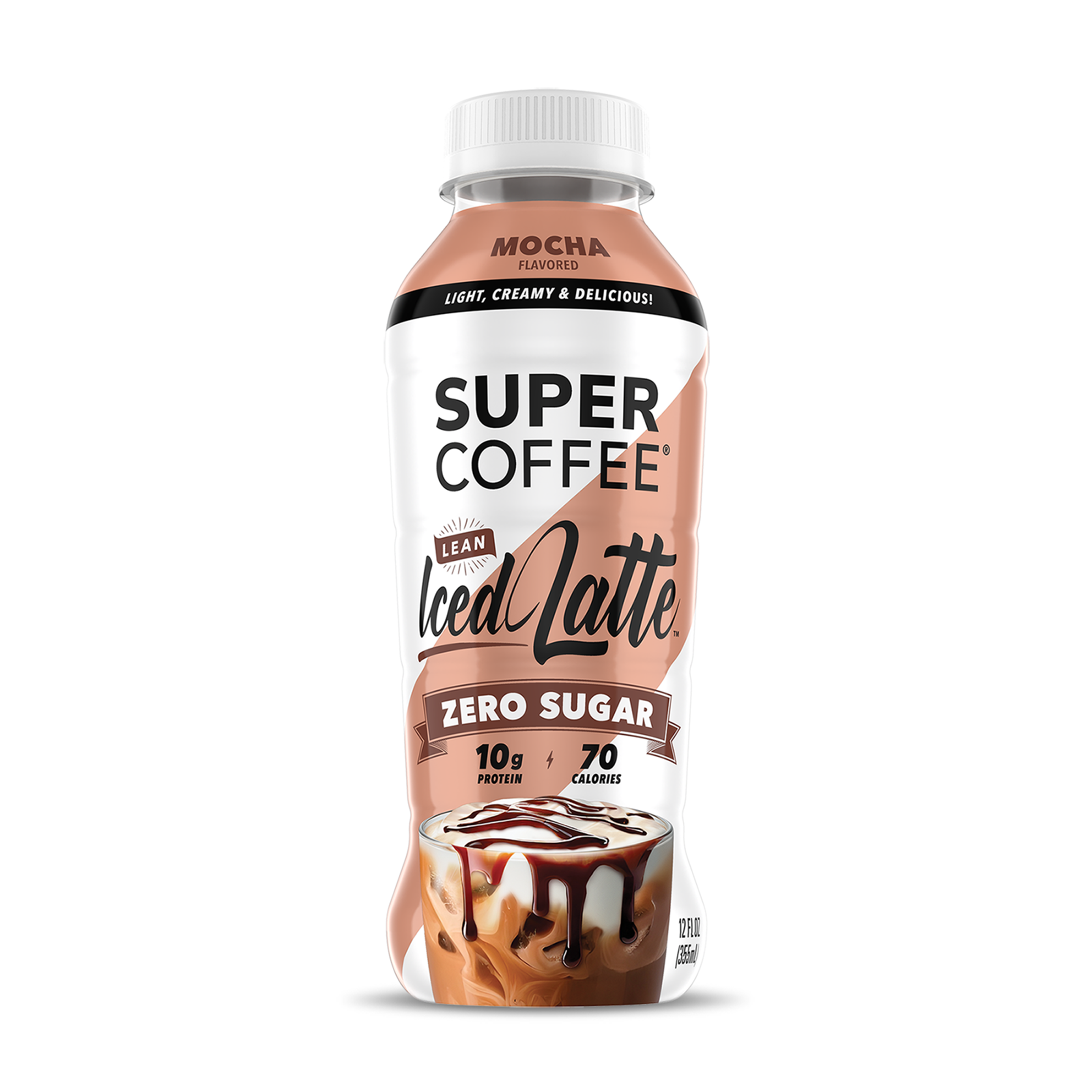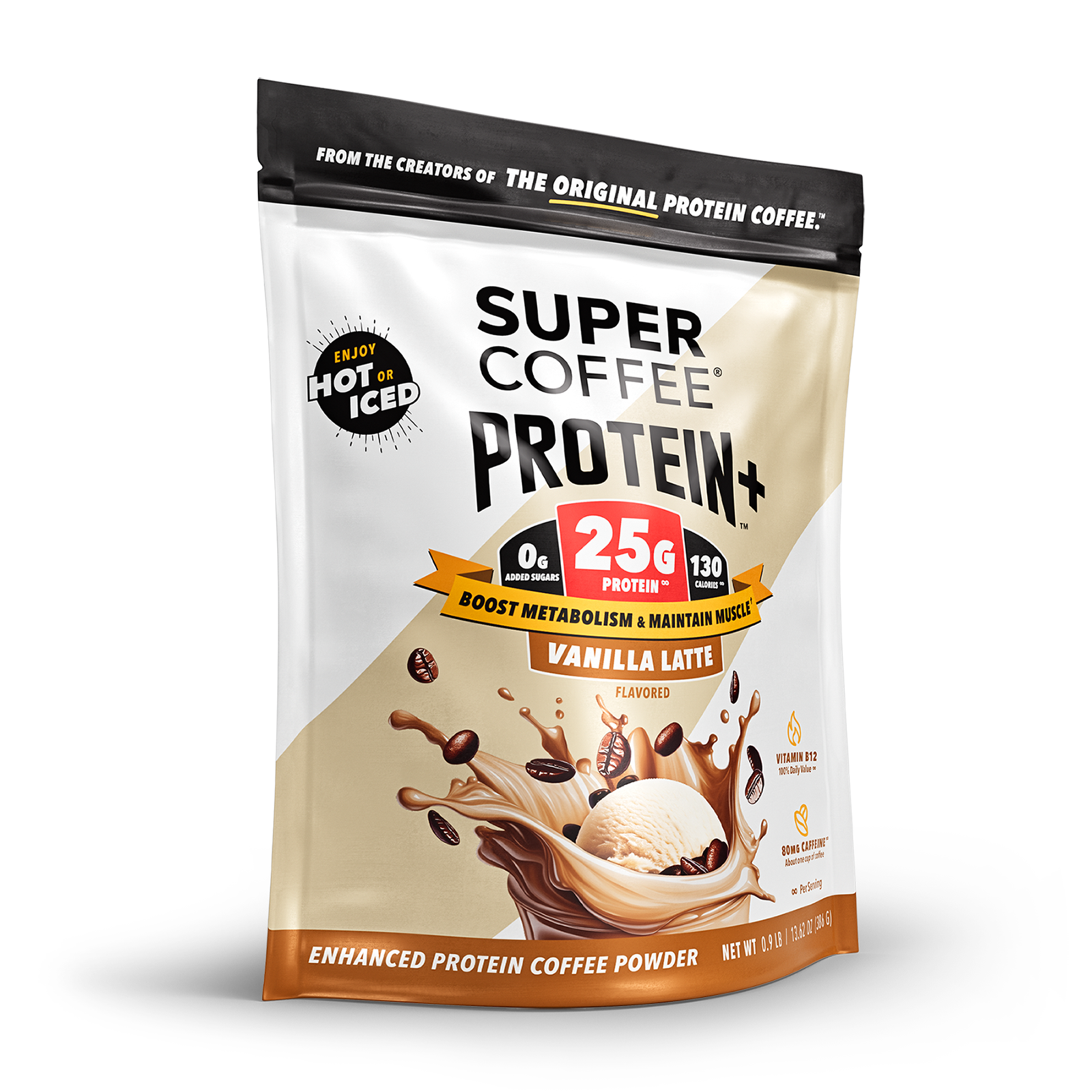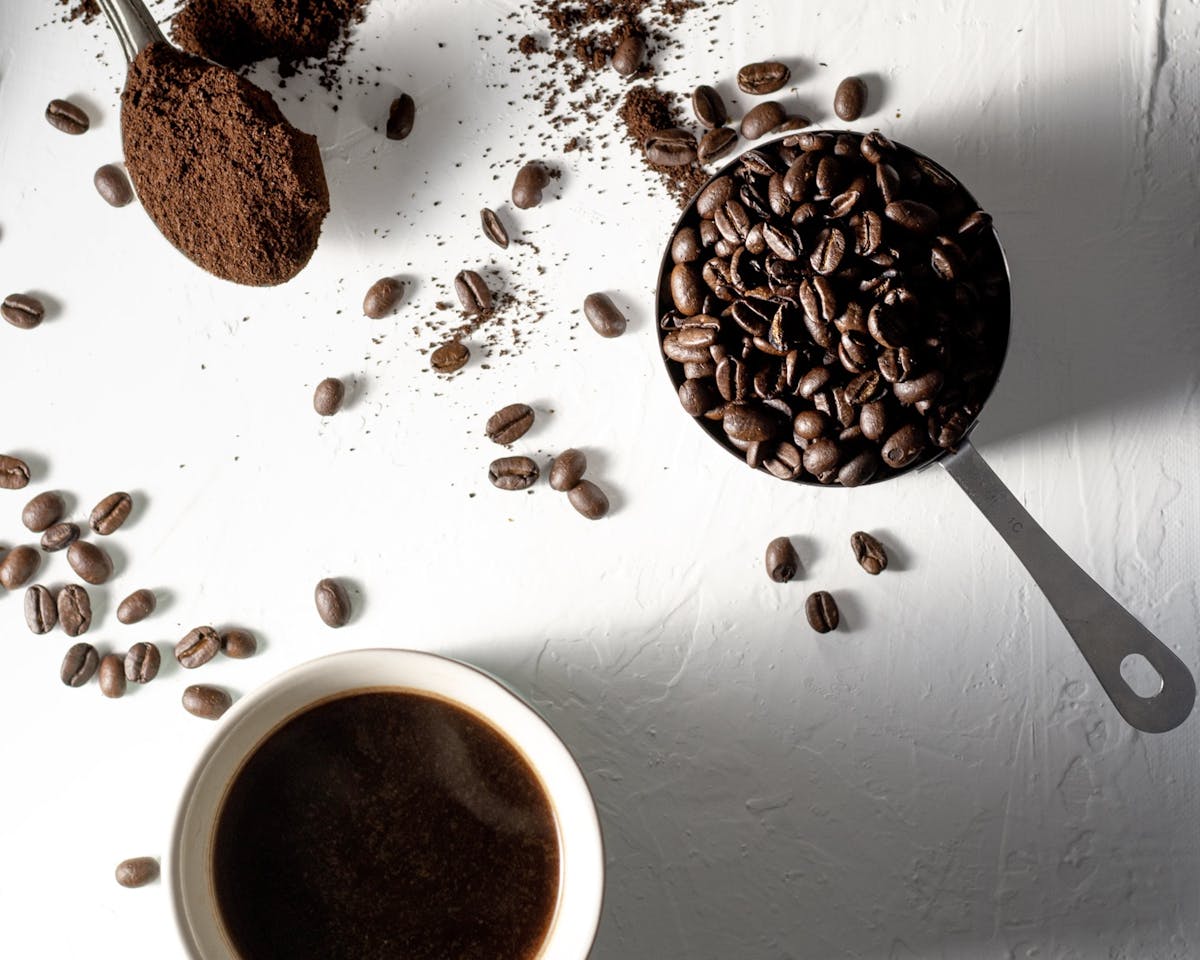Your cart is empty
What is coffee? The stuff that lets you get out of bed and off to work in the morning. What is coffee? The common language of business breakfasts and get-togethers with friends. What is coffee? The beverage that helps you take a few minutes to calm down, relax and think. What is coffee? The perfect cap on a perfect meal. What is coffee? It’s absolutely, incredibly delicious – when it’s made properly.
We all know the role that coffee plays in our life, and we all have our favorite times of day or favorite people to drink it with.
To be honest, though, that’s not really what coffee is. It’s just how we use it and why we love it.
62% of Americans drink coffee every day. They drink an average of more than three cups of coffee or specialty coffee each day. The newfound popularity of coffee drinks has sent the numbers soaring; the sale of lattes, cappuccinos and flat whites has increased by an amazing 50% over the last five years. And the USDA (U.S. Department of Agriculture) predicts another strong increase for coffee imports over the coming year.
You’re probably in that group, yet you likely know very little about the beverage that’s such a big part of your everyday life. Aren’t you just a little curious to learn more about coffee?
We knew you would be.
Exactly What Is Coffee?

Just so we’re all on the same page, let’s start with a definition. Coffee is a beverage that’s brewed with very hot or boiling water, and coffee beans which have already been roasted and ground.
Coffee beans are sourced from coffee plants, members of the botanical genus Coffea. The beans are found inside the plant’s fruit, which are known as cherries; it takes about a year for a cherry to mature and ripen so its bean can be harvested.
The plants (which are actually coffee trees trimmed to a smaller size) require mild temperatures, sufficient shade and lots of rain. For that reason they can only be productively grown in temperate areas of the world between the Tropic of Cancer and Tropic of Capricorn; in the Western Hemisphere, that’s between Central Mexico in the north and the Amazon rain forest in the South. That area is known as the coffee belt or bean belt.
Coffee is slightly acidic and somewhat bitter, it’s known to have health benefits, it acts as a mild stimulant because of its caffeine content, and it’s the second most-popular beverage in the world (right behind tea, and not counting water).
We’ll be looking at those attributes in more detail, after a look at the history of coffee.
How Did People Start Drinking Coffee?
It’s virtually impossible to know exactly when people started drinking coffee. It’s believed that the beverage originated either in Yemen or Ethiopia around the seventh or eighth century, but historians weren’t exactly publishing detailed accounts back then. We have to rely on later research and verbal histories passed down through the generations.
Here are the two most commonly-told stories about the discovery of coffee.
Ethiopia
The coolest story involves a goat-herder from the Ethiopian region known as Kaffa. (Hmm…Kaffa? Coffee? That’s already cool.) Supposedly his goats unearthed a coffee plant, he tried chewing the beans and was amazed at their stimulant effect, so he brought them to a local monastery.
Unimpressed monks threw the coffee beans into a fire to get rid of them, but were intrigued by the aroma of the roasted beans and rescued them, throwing them into hot water to preserve them. Eureka! Coffee!
In truth, it’s believed that Ethiopians had been chewing coffee beans for centuries before that. It appears they’d grind the beans, mix the coffee with animal fat or ghee, and take the combination with them on long trips to be used for energy and stimulation.
Somewhere around the 1100s, some Ethiopian tribes mixed coffee with porridge, and eventually they started making wine from the beans – or boiling them to make coffee. That story isn’t as delightful as the goat-herder one, but it’s more believable.
Yemen
The origin tale from Yemen is also pretty cool. A priest (who was also a doctor) was exiled to a Yemeni desert cave, where he was on the brink of starving to death. Either he discovered a coffee plant – or in a cooler version of the story, a bird brought him a branch from a coffee tree.
Finding the cherries too bitter to eat raw, he threw them into a fire to cook them, but that made them too hard to chew. He then boiled them, and you can guess the rest of the story; his exile was lifted, he brought coffee beans home with him, and everyone lived happily ever after. In fact, the priest was declared a saint and a monastery was built in his name.
Nice story. Here’s what we actually know for certain, though. Coffee beans were transported from Ethiopia to Yemen in the 15th century, where Sufi monks drank it to stay awake during their marathon prayer sessions. The Yemeni city of Mocha (hmmm…mocha! Interesting!) also became a central distribution point for the prized Mocha beans grown in the mountains of that region, which were shipped to Europe and other ports beginning in the 17th century.
So we know for a fact that many hundreds of years ago, people were drinking coffee on the Arabian Peninsula and in the Middle East. How did it become so ubiquitous in the West after that?
The Increased Popularity of Coffee
Merchants and diplomats from around the world became familiar with the intoxicating aroma and delicious taste of coffee during the 16th and 17th century, as they traveled to Turkey, Middle Eastern nations, and other regions to which the practice of drinking coffee had spread.
- Turkey: The Ottoman Empire had conquered Yemen in 1538, and the governor they installed there brought coffee back to Istanbul in 1555. Turkish royalty began roasting beans to make the brew (a “chief coffee maker” was actually a member of the royal court), and its popularity quickly spread to the wealthy and then to the public through the coffeehouses that sprang up.
- Italy: Merchants first brought coffee to Venice in 1615, and coffeehouses began opening a few decades later.
- England: Coffee was introduced at Oxford by a Turkish student in 1637 and word quickly spread; coffeehouses were widespread in London by 1660.
- France: The French ambassador to Italy first brought coffee beans to southern France in 1644, and a Turkish ambassador brought coffee to Paris in 1669. Merchants who had traveled to Turkey began importing the beans, and coffee drinking became a big deal in high society and artistic circles. Coffeehouses were on nearly every street corner by the turn of the 16th century.
You get the picture. But how did coffee come to America?
It had been introduced in the Caribbean islands and South America in the 1720s, and by the middle of that century coffeehouses had been established in the colonies. Coffee didn’t really take hold, however, until the revolt against King George II which was underscored by the Boston Tea Party.
The colonists switched en masse from tea to coffee, and America began a love affair with coffee that has never ended – although 18th and 19th century Americans could never have anticipated the Starbucks-and-Dunkin’ culture we have today.
Types of Coffee
Ask a group of people to name their favorite type of coffee, and the vast majority will probably name varieties or flavors like latte, instant coffee, iced coffee, decaf, or “with milk and sugar.”
That’s putting the cart before the horse, though. Let’s first consider the types of coffee beans, types of roast and brewing methods that are used to produce all of those varieties and flavors.
Coffee Beans
There are two predominant types of coffee beans, Arabica and Robusta. (Lighter Excelsa beans and powerful Liberica beans are mostly found in Asia, but are occasionally carried by specialty coffee vendors.)
- Arabica beans are the most popular because of their quality, with nearly two-thirds of the world’s coffee produced from them. Generally speaking, Arabica coffee isn’t bitter; it’s smooth and flavorful with more acidity – and it’s more expensive to grow, because the plants can only be cultivated at higher altitudes with extra shade and water. Those are the reasons why 100% Arabica coffee is a favorite with coffee drinkers, and the pricier choice.
- Robusta beans are hardier and easier to grow, so they’re less expensive to buy. They’re also stronger with more bitterness and a lot more caffeine, making Robusta coffee harsher and, for most people, less desirable. Why do coffee roasters buy them? Because they can make a good profit by selling cheaper coffee – and because many espresso blends include a small percentage of Robusta beans in order to boost caffeine levels and produce a better crema.
Coffee Roasts
Everyone who drinks coffee has heard of light, medium and dark roasts. But even many coffee lovers can’t provide exact definitions for them. Let’s take care of that.
Roasted coffee supplanted boiled coffee centuries ago, but the modern-day process of roasting coffee beans didn’t really take shape until the mid-19th century, when large-scale commercial roasters were patented and became available to coffee producers.
Roasts can be identified in a number of ways. Names like French roast and Italian roast usually describe the mix of beans and how they’ve been roasted, but they’re not standard definitions. The most common method of identification would also seem to be the easiest, the color of the beans: light, medium and dark. In reality, their actual color is only one factor in determining a roast’s description. Smell, internal temperature during roasting, and even the sound the beans make during the process all factor into whether beans are considered light, medium or dark roast.
Here’s what to expect from each of the common roasts.
- Light Roast: Higher acidity, light flavor and aroma. (Examples are city roast and cinnamon roast.)
- Medium Roast: Stronger flavor but not overpowering, some roast taste, most popular in America. (Examples are American roast and breakfast roast.)
- Dark Roast: Rich and dark, strong aroma and flavor, noticeable bitterness, less acidity. (Examples are French roast and espresso roast.)
One common myth debunked: dark roast coffee doesn’t have more caffeine than light roast. Here’s the real story. Once beans are selected for roasting, they all contain the same amount of caffeine. However, the longer they roast, the less they weigh. For that reason, it takes more ground light roast to add up to a pound – and the more coffee, the more caffeine. In short, light roast contains a little more caffeine than dark roast.
Coffee Brewing Methods
Another way to categorize coffee is by the way it’s brewed, because the brewing method has a major impact on both flavor and strength. We’ll skip the old way of making coffee, boiling the beans, because the final product is usually pretty nasty.
- Drip Coffee: The perennial favorite. This is what your kitchen coffee maker – or the one in a high-end restaurant – turns out. It’s called “drip coffee” because hot water drips through coffee grounds, picking up the coffee’s flavor and aroma, before it’s filtered and served. It’s easy, predictable and reliable. Keurig K-Cups and the other pods so popular today also make drip coffee.
- Pour-Over: Essentially, drip coffee without the machine. You hold the coffee filter (containing ground coffee) over your cup, and slowly pour hot water directly into the filter. Do it right and your coffee will be better, because you have full control over every aspect of the pour. At least, in theory.
- French Press: Large coffee grounds (ideally from a burr grinder) are steeped in the hot water you place into this manual machine. Press down on the plunger after a few minutes, and rich coffee is forced out. This one takes some practice, since the method can be tricky to master.
- Espresso: An expensive espresso machine introduces pressure into the equation. When pressurized water is forced through compacted, fine coffee grounds, it produces a richer, thicker coffee with the trademark crema on the surface. An AeroPress machine does basically the same thing, but a lot faster.
- Cold brew: As you might expect from the name, no heat is used to create this refreshing coffee. Ground coffee is steeped in cold or room temperature water for 12-24 hours, much the same way that you’d make tea on your porch. After filtering, cold brew usually requires dilution because it’s so strong. Note: this is very different than iced coffee, which is just brewed coffee poured over ice.
Coffee Varieties and Flavors
We could write an entire article on this subject. In fact, we have. However, let’s just do a lightning round with some of the possibilities that most people use to describe their favorite “type of coffee.”
- “Regular” coffee: Black, with cream or milk, with sugar or sweetener, café au lait, iced, and if it’s late, decaffeinated coffee is a good choice.
- Espresso drinks: An espresso shot (or double shot), latte, cappuccino, Americano (espresso with hot water), cortado (1:1 milk/espresso ratio), flat white (3:1 milk/espresso), macchiato (espresso “stained” with milk, or milk “stained” with espresso), red eye (coffee braced with a shot of espresso), and for dessert, affogato (ice cream topped with espresso).
- Coffee shop specialties: They range from the sublime to the ridiculous, including mochaccino (espresso and hot chocolate – different than a mocha which is espresso, chocolate and steamed milk), gelato da bere (blended espresso and gelato), chocolate espresso, and pumpkin spice latte (or anything made with pumpkin spice).
That’s just scratching the surface. If you want to know how many varieties and flavors of coffee there really are, consider this: a lot of them aren’t even on the Starbucks menu.
Health Benefits of Coffee
There can be no definitive summary of coffee’s health benefits, since some of the research is preliminary and many other possibilities are still being investigated. But coffee contains a number of vitamins (B2, B3 among them), minerals (including potassium and magnesium), and powerful antioxidants (like caffeic and chlorogenic acids). Those apparently contribute to these (and other) potential benefits of drinking coffee regularly.
Large studies and meta-analyses of research involving coffee drinkers show that they have about a 10% lower risk of developing type 2 diabetes, along with lower risks of metabolic syndrome and cardiovascular disease. 3-4 cups per day seems to be the “sweet spot.”
- Consuming the same amount of coffee daily seems to lower the risk of depression as well.
- Participants in one study who drank three cups of coffee per day apparently lowered their risk of liver cancer by 50%. Research also indicates that the risk of other types of liver disease is also lower in coffee drinkers.
- Parkinson’s disease risk seems to be dramatically lower in those who drink more than four cups of coffee a day, and coffee drinking may also help sufferers control their movements. Caffeine is believed responsible for those effects.
Oh, and did we mention that coffee tastes incredibly good, too? A freshly brewed cup can always improve your mood – and what better benefit could there be?
Blog posts
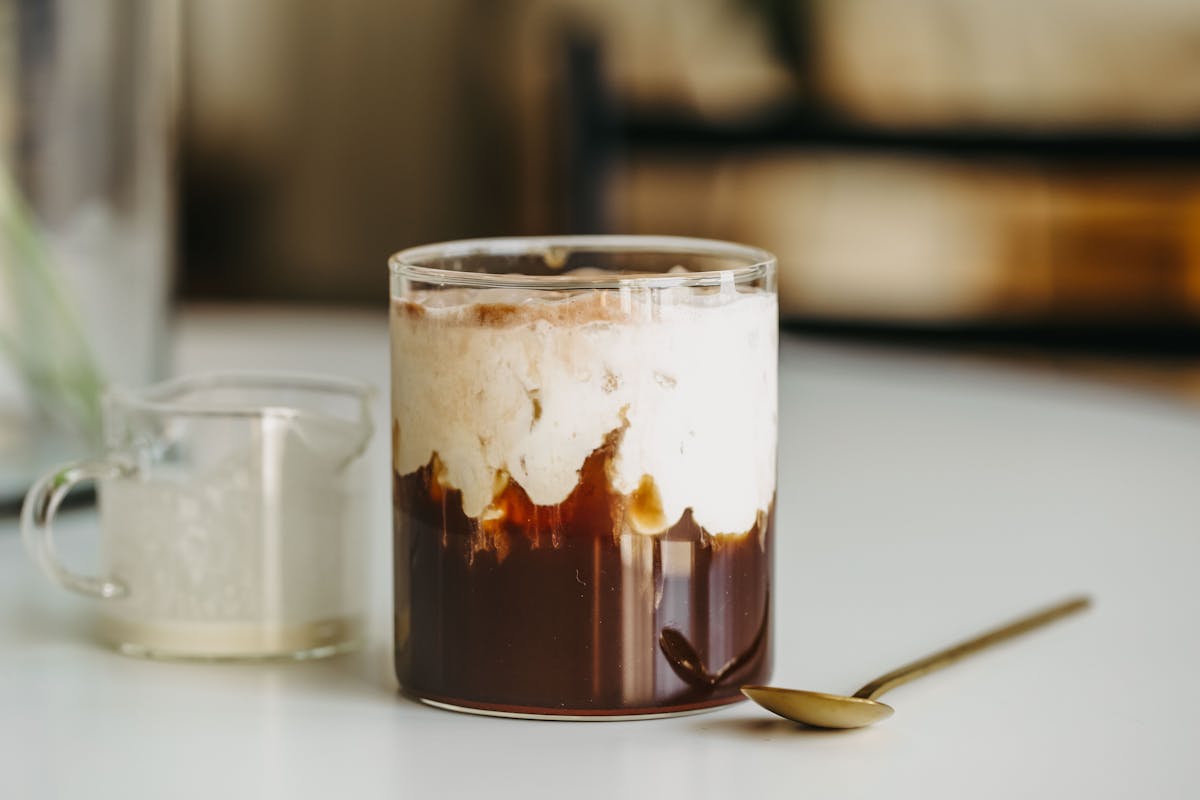
Cold, creamy and delicious - This chocolatey cold brew recipe is the perfect treat to kickstart your morning! The Recipe Chocolate Cream Cold Brew Prep Time: 1 minutes Cook Time: 5 minutes Ingre...
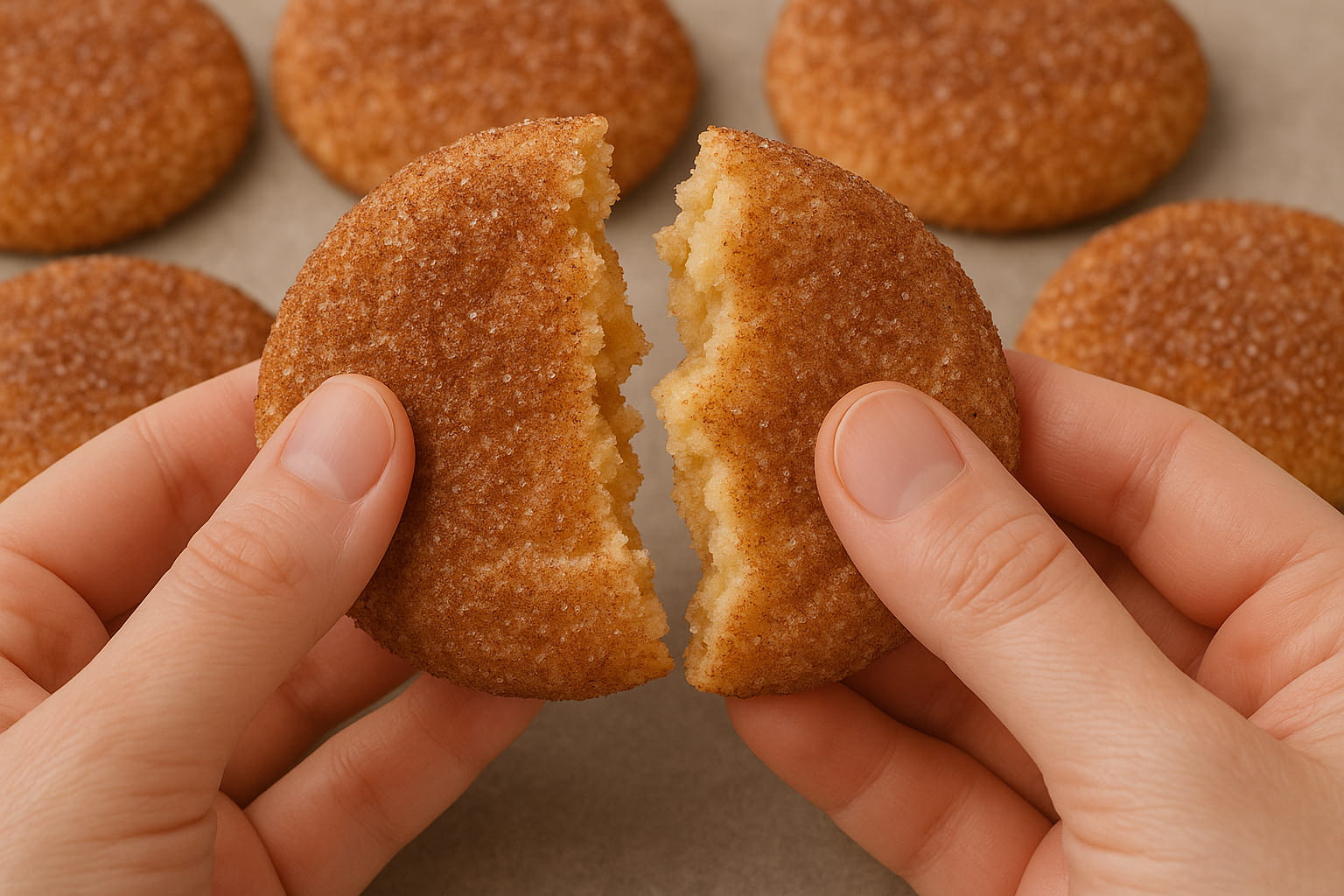
Indulge in the warm embrace of autumn with Pumpkin Spice Snickerdoodles - soft, spiced, and utterly irresistible! The Recipe Pumpkin Spice Snickerdoodles Prep Time: 10 minutes Cook Time: 1 hour ...
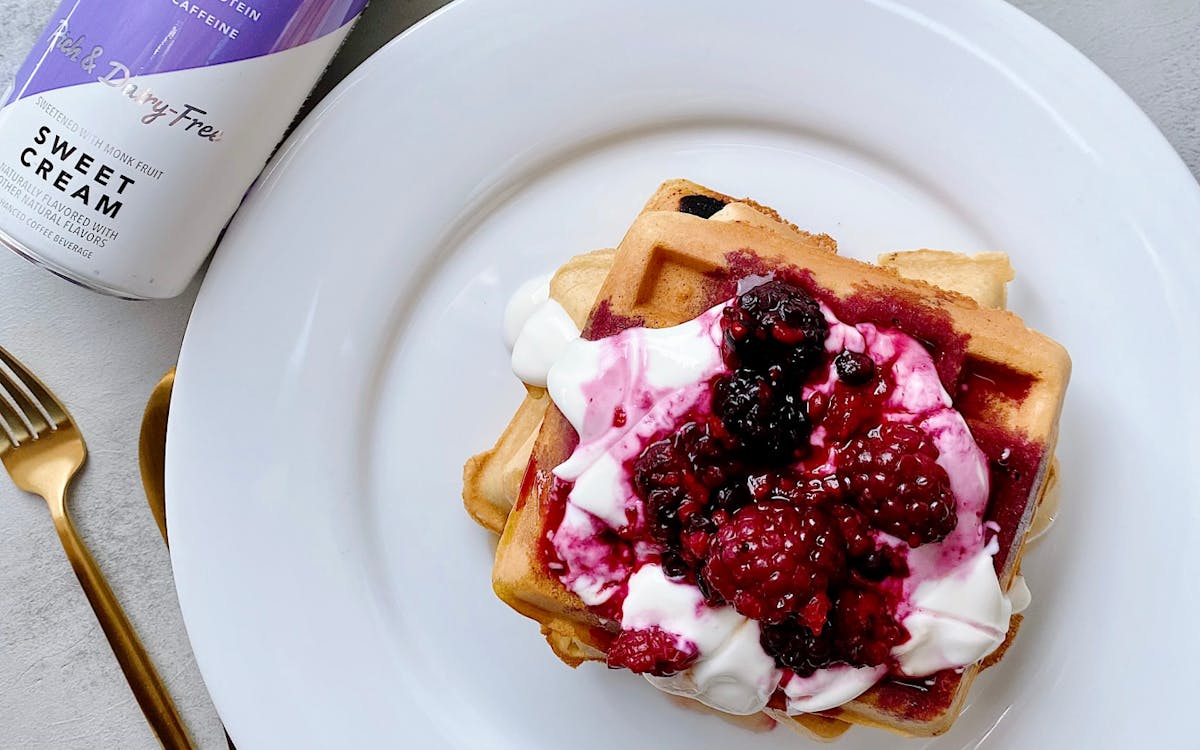
Low Carb Berries & Cream Waffles
These low carb/low sugar waffles are delicious, wonderfully crispy on the outside, and fluffy on the inside. You can also double batch and freeze for easy weekday breakfasts. Featuring our almost-...
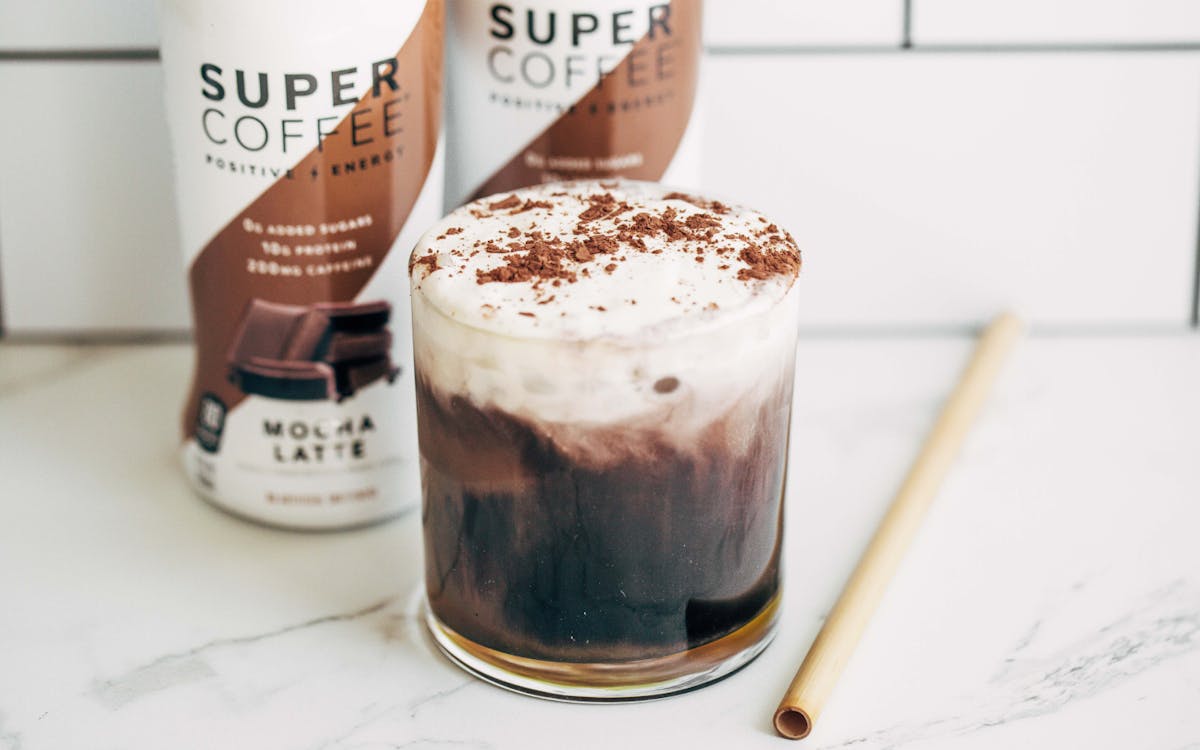
This may be the most fun latte recipe we’ve tried yet! With gooey & decadent black chocolate drizzle and a thick layer of creamy French Vanilla, just one sip of this iced latte will transport ...
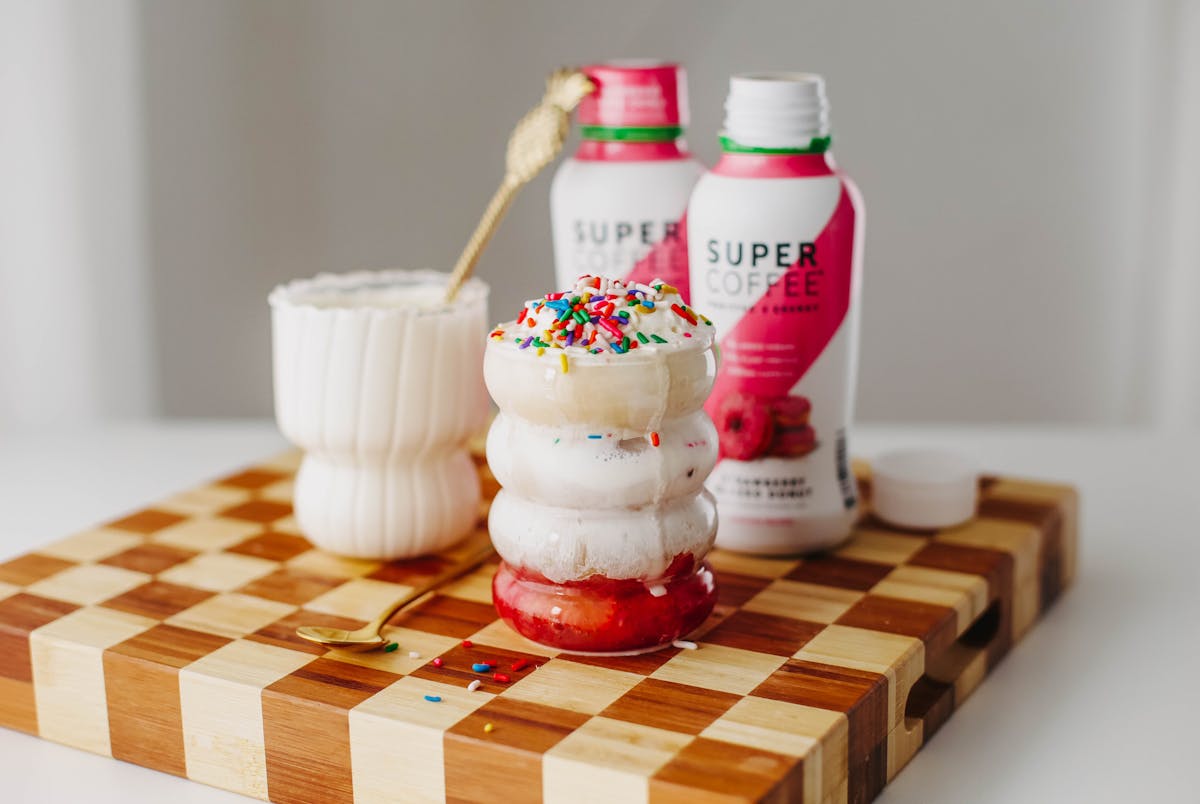
Strawberry Sprinkle Keto Coffee Recipe
Nutritional Info Calories: 274 Fat: 26.7g Carbs: 5.7g Protein: 4.5g Sugar: 2.1g Ingredients 3 strawberries, sliced. 3-4 tbsp heavy cream or half & half. Enough ice to fill a glass. 1/2 cup S...
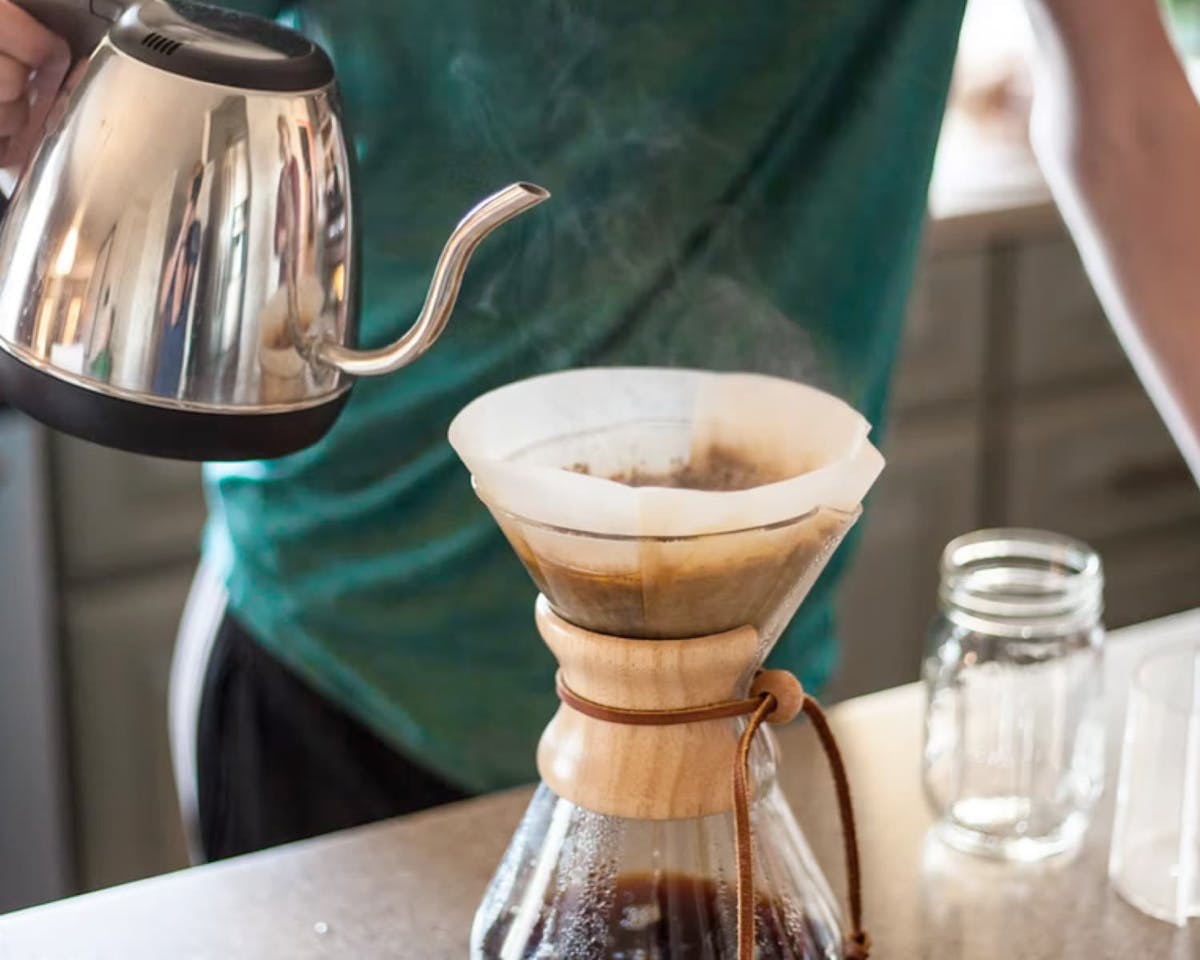
8 Healthy Coffee Recipes That Are Better Than Starbucks
There’s no question about it. Coffee is good for you. Those who don’t like black coffee, of course, commonly add milk, cream and sugar – even if that also means adding calories, fat or carbs to the...



